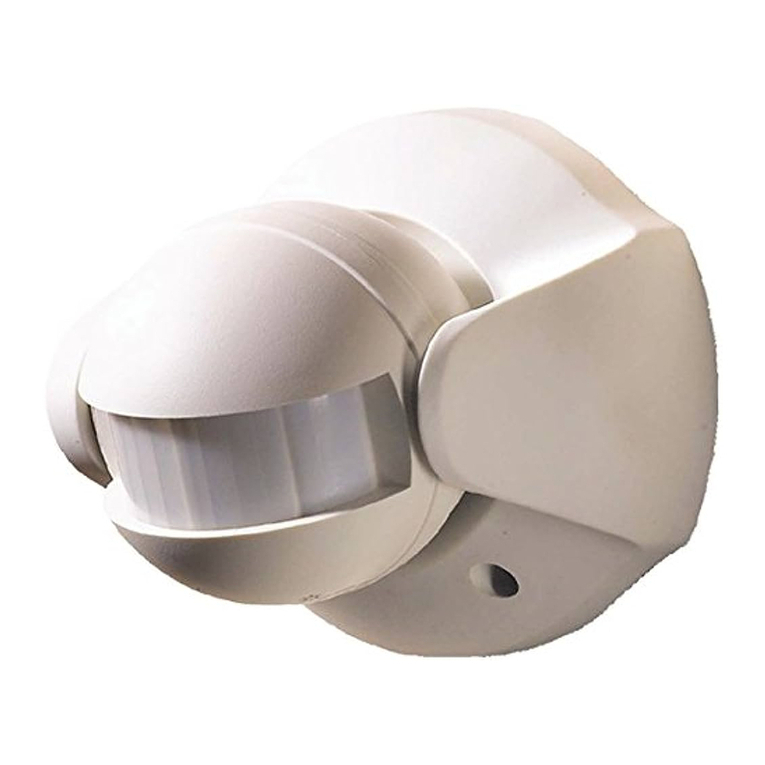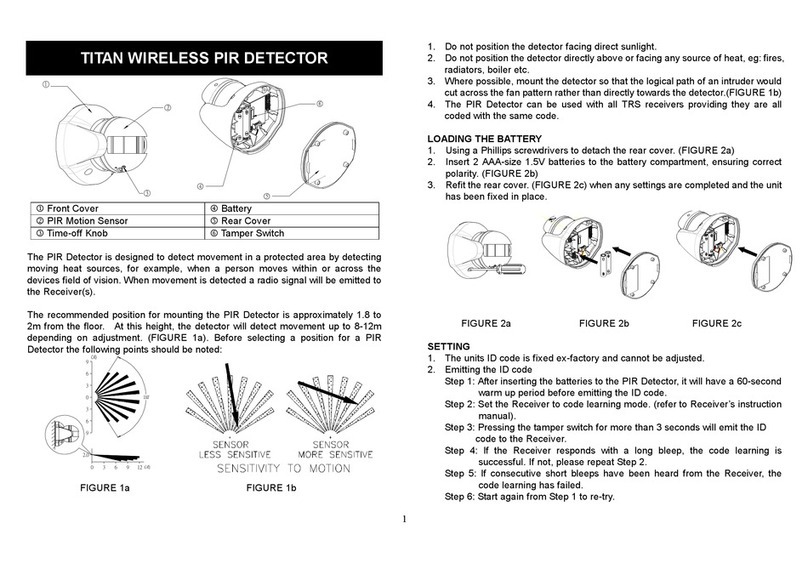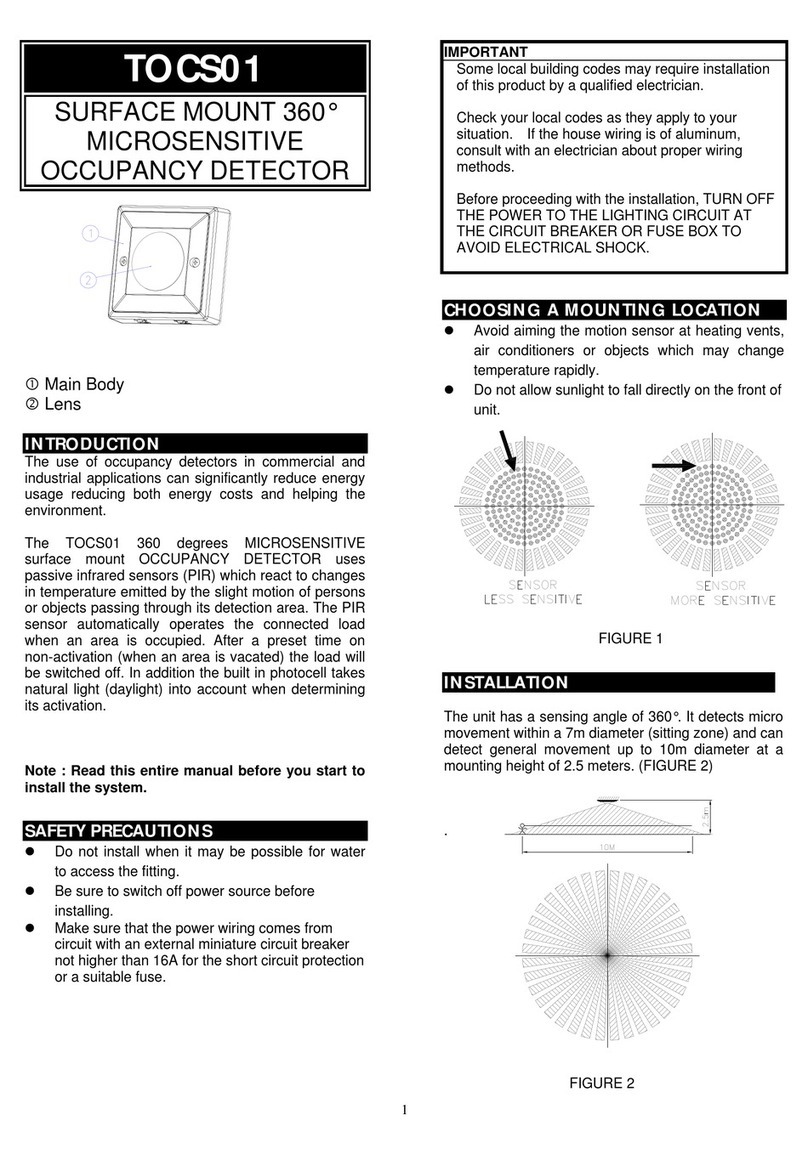FIGURE 8
Turn on the wall switch. The light will turn on for
about 1 minute to warm up before extinguishing.
Walk through the detection area. The light turns
on when you move and turns off when you stop.
Wait for the light to turn off before moving again to
test the sensor.
Adjust the motion sensor to cover the desired
detection area. For a smaller coverage area, point
the sensor down; for a larger coverage area, point
the sensor up.
(2) TIME ADJUSTMENT
The TIME adjustment controls how long the light will
stay on after the motion has been detected.
Turn the TIME control knob clockwise to increase how
long the lights stay on (max. approx 12 minutes) or
counter clockwise to decrease the time delay (min.
approx 5 seconds) (FIGURE 9).
Approx 5 seconds Approx 12 minutes
FIGURE 9
(3) LITE ADJUSTMENT
The LITE adjustment determines at what light level the
system will start operating each evening with the
sensor set to automatic operation.
Provisionally turn the LITE control knob fully clockwise
to the moon (dusk) position (FIGURE 10). In this
provisional setting mode, the motion sensor remains
inactive during daylight. When dusk falls, turn the LITE
control knob slowly counter clockwise until the light
comes on. At this setting, the system will become
active at dusk each day. If required, adjust the setting
clockwise to make the system become active later in
the evening, or counter clockwise for earlier operation.
FIGURE 10
4
OPERATION
By using the wall switch connected to your motion
sensor, you can easily select one of two modes of
operation: Automatic Operation and Manual Override.
(1) AUTOMATIC OPERATION
Turn on the wall switch. When the motion sensor
detects motion, the light automatically turns on. The
built-in photocell sensor turns the motion sensor off
and on according to the light level set by the Lite
Adjustment.
(2) MANUAL OVERRIDE
To keep the light on regardless of motion, you can
override the Automatic Operation. By turning the wall
switch OFF and then ON again within 2 seconds, the
light will remain ON in manual override mode. Reset
back to Automatic Operation by turning OFF the wall
switch for at least 10 seconds and then turning back
ON.
TROUBLESHOOTING
Light does not turn on:
Confirm that you have made a correct “wiring
connection” & that the connections are secure.
Make sure the power is switched ON.
Ensure the light bulb has not failed and that it is
correctly inserted in the lampholder.
Adjust the LITE control knob by turning it counter
clockwise until the light comes on.
























